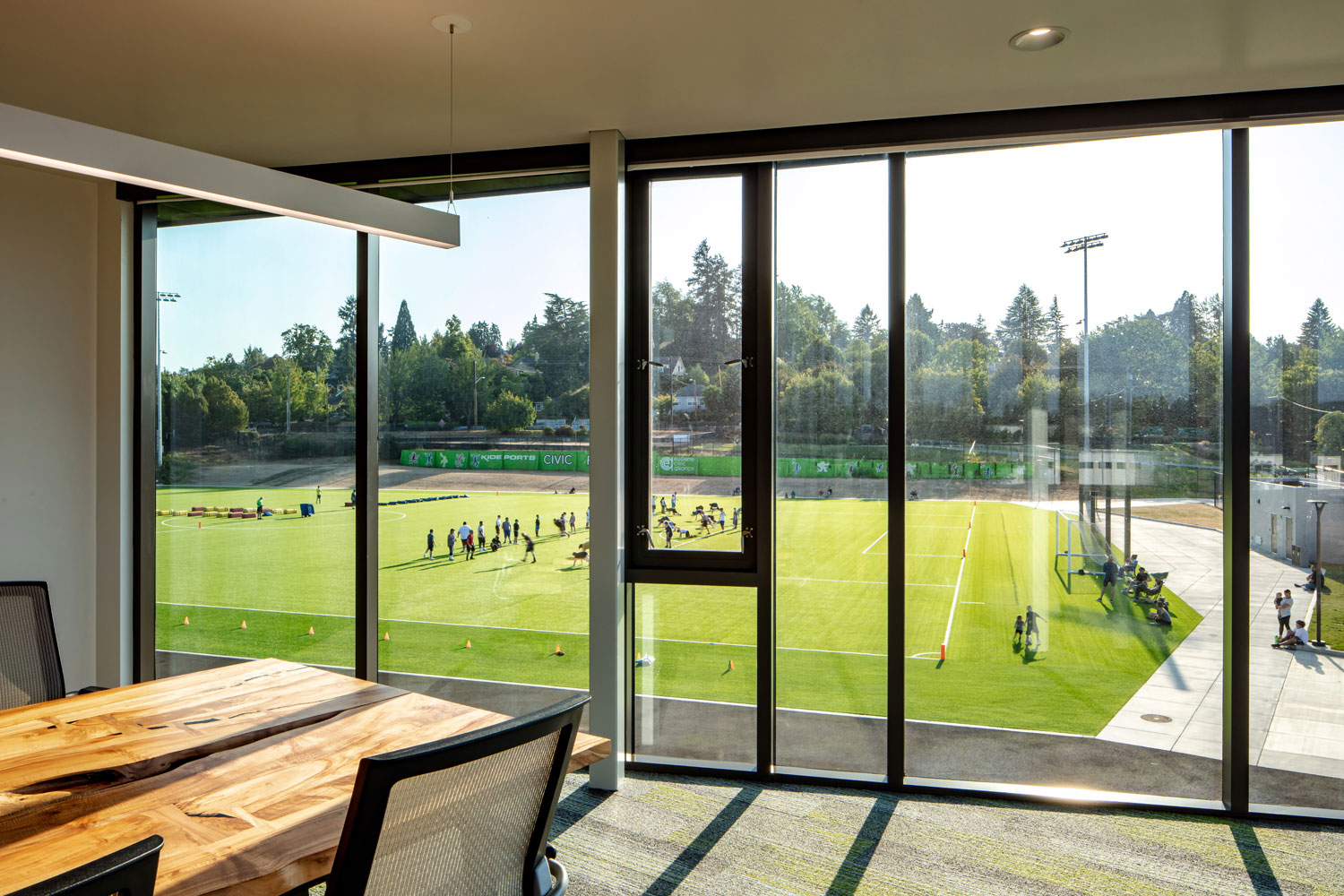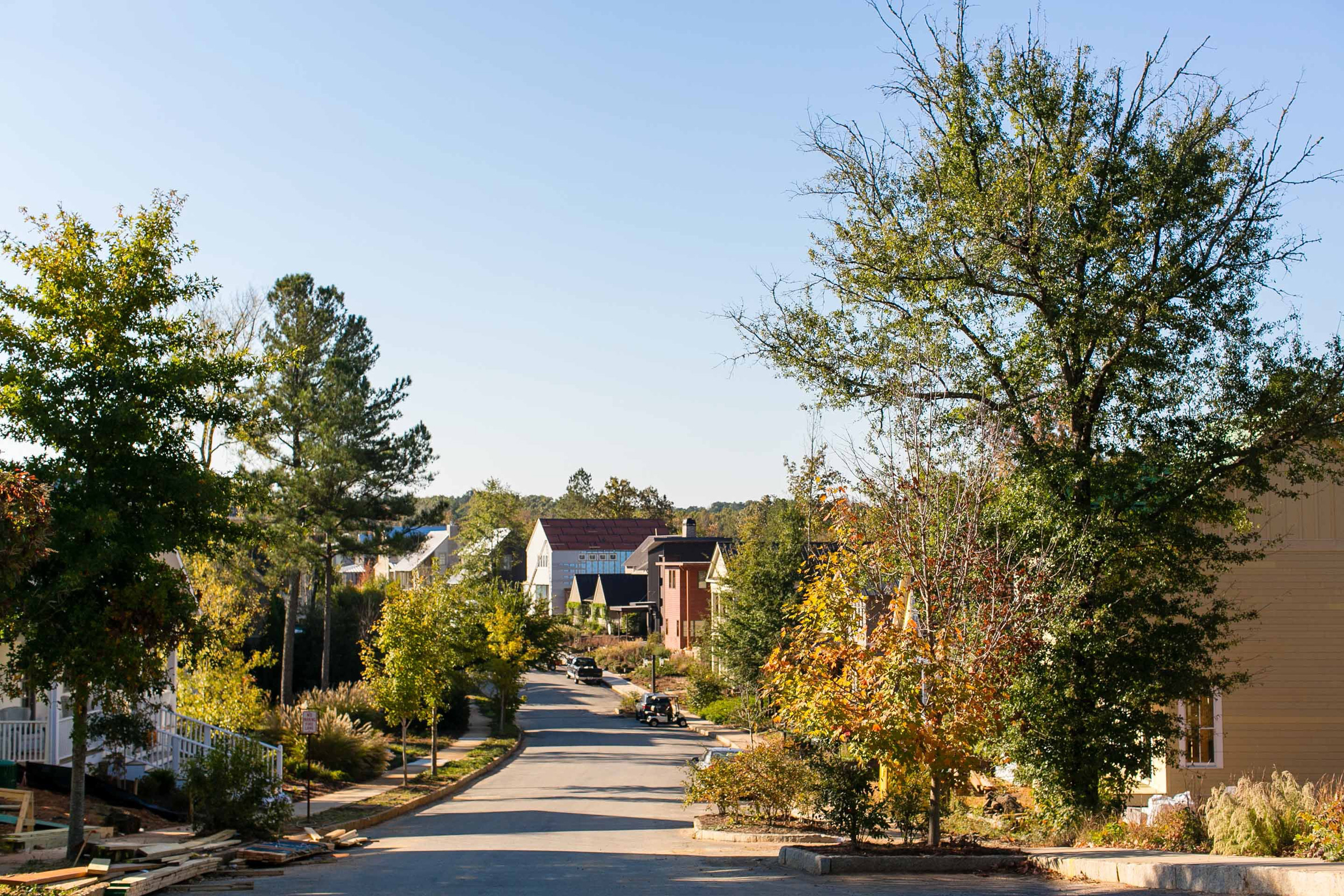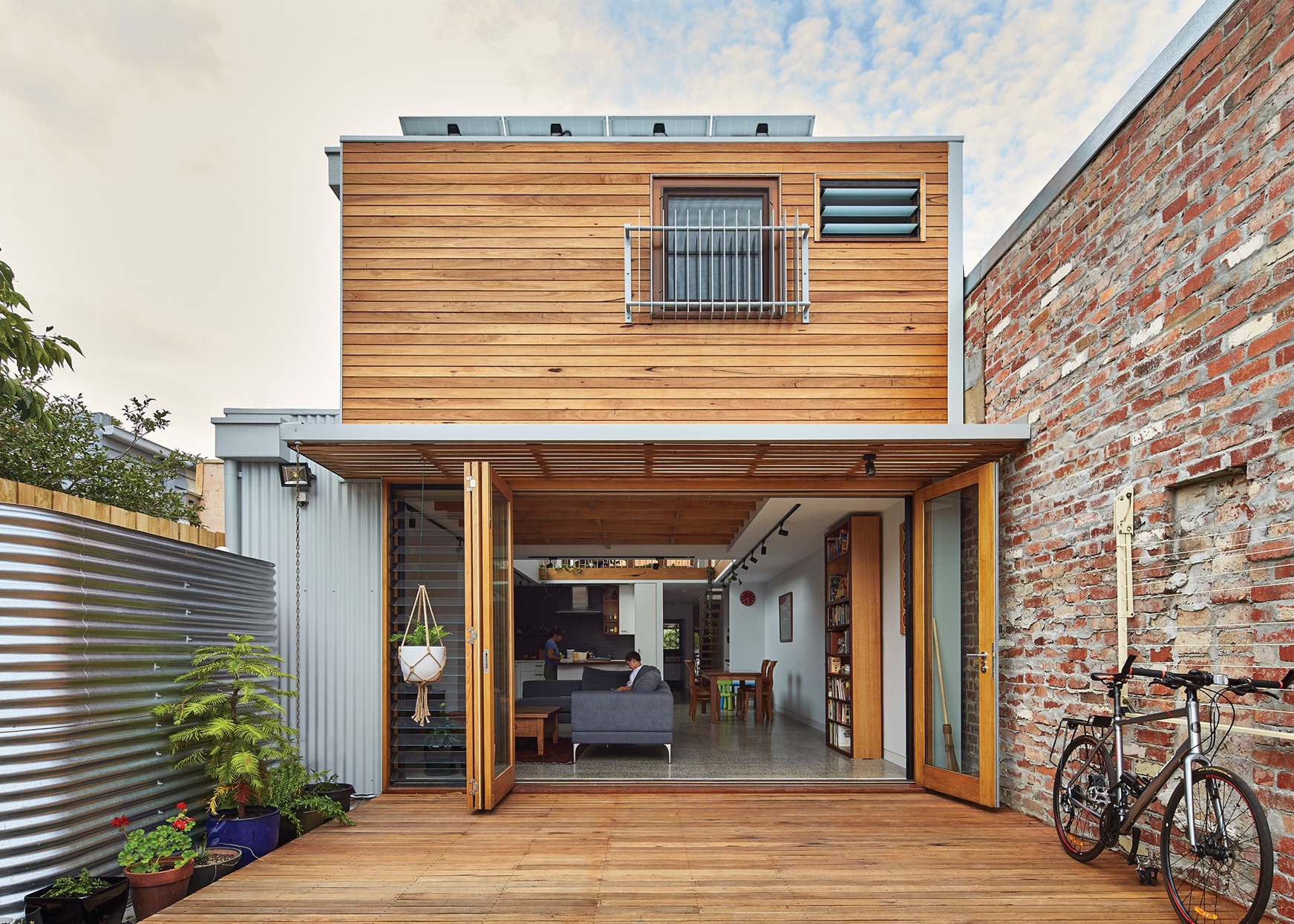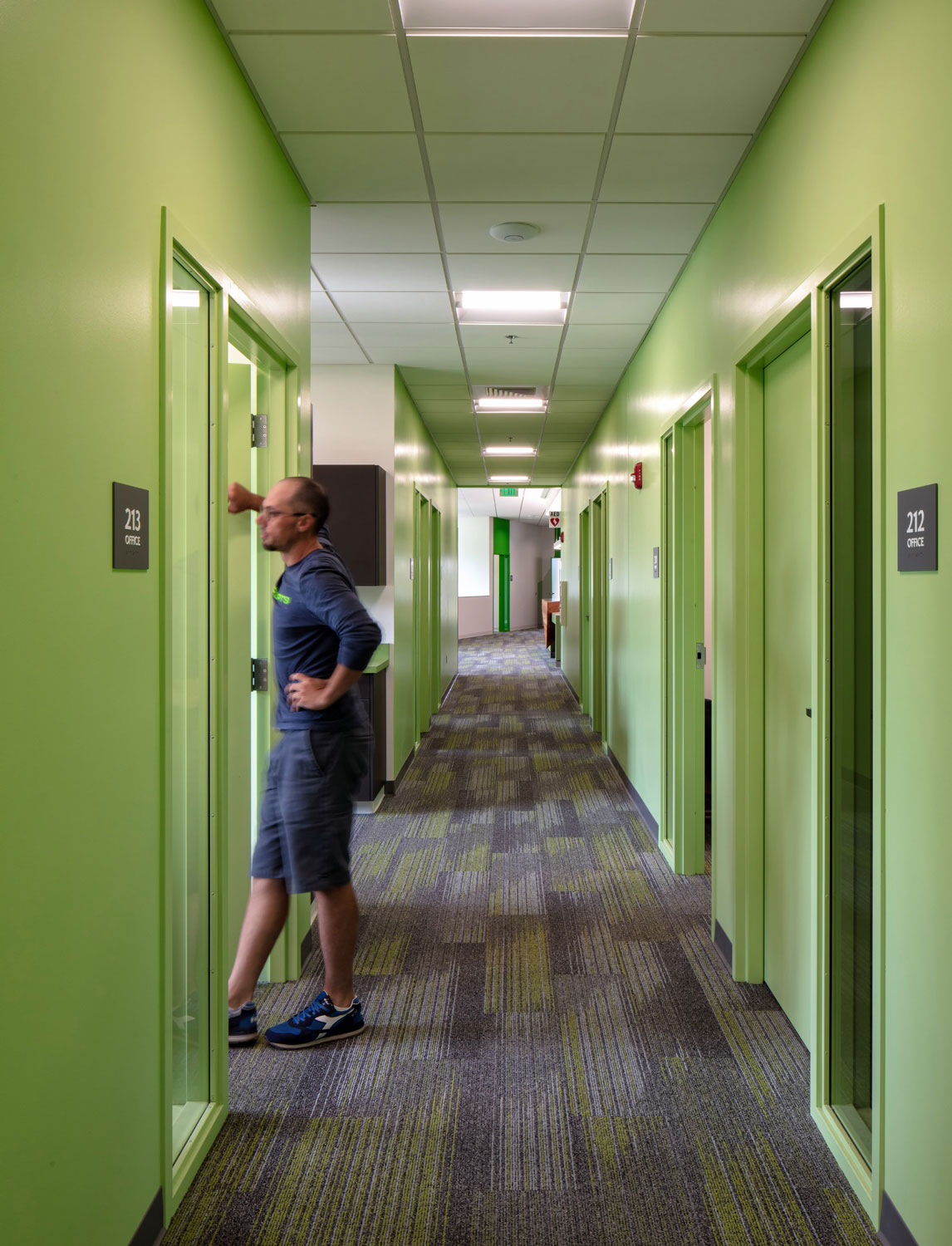Story at a glance:
- The new Civic Park in Eugene, Oregon was designed to better the community and respond to the environment.
- The project, designed by Skylab, replaces the Eugene Civic Stadium, which was destroyed by fire.
- The project is being built in phases. Turf playing field, ticket office, fieldhouse, site circulation, and parking were completed in 2021.
When fire destroyed the iconic Eugene Civic Stadium, architects saw it as an opportunity to redevelop in a way that benefited the community at large as well as the environment.
“Designing built structures to work in concert with natural conditions is a core belief of our practice,” says Jamin Aasum, project architect at Skylab. “We took this simple idea and explored how best to interpret this for this site and commission.”
Comprising a new 40,000-square-foot field house, a new civic stadium, and sports fields for the community, the complex will house the first facilities for the nonprofit after-school organization KidSports, one of the instrumental organizations that are part of the park redevelopment.
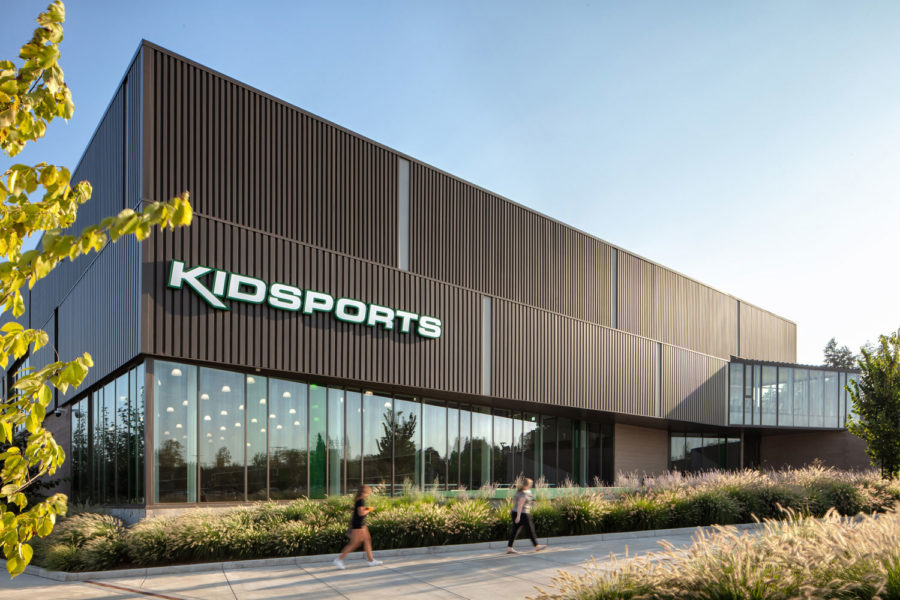
Photo by Stephen A. Miller
The design team started with the effort to restore the natural characteristics of the site. “To make it better than the way we found it,” Aasum says. “After the historic venue was destroyed by fire, an adaptive reuse plan was created that envisioned repair of the site ecology while enhancing long established community recreational uses.”
Aasum says daylight is the project’s most impressive sustainable feature, as the fieldhouse is sited to capture maximum natural light. “High, east-facing windows bring light in over the courts and create views through the courts from the upper-level office relight glazing,” he says. “Low glazing at the north and south of the courts visually extends the playing areas into the exterior courts and play areas. Supervision and safety are enhanced through this transparency, as well as the ability of the courts to function with 100% natural lighting. All electrical lighting is controlled with daylight sensors to automatically adjust lighting levels and save energy.”
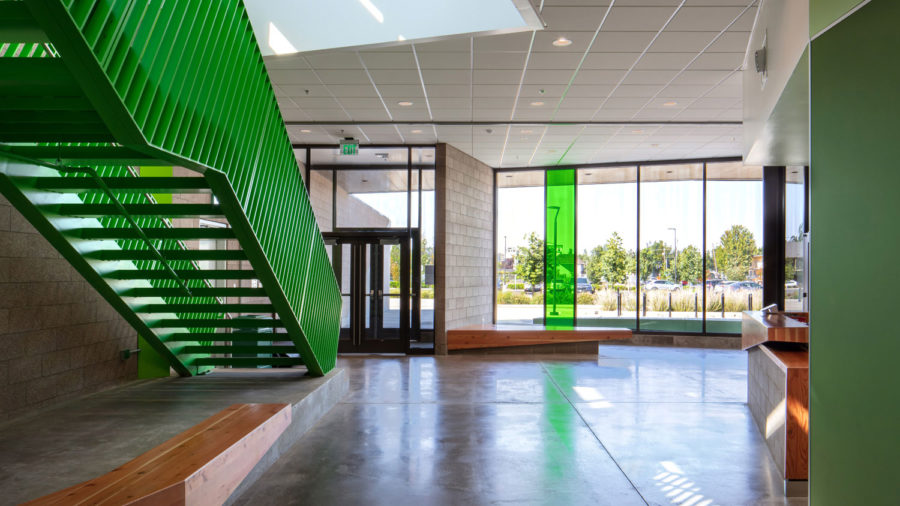
The design of the field house is inspired by the patterns inherent in human movement. Subtle gestures, including syncopated window patterns, angled walls, sloping berms, and shifts in the rib spacing of the metal siding, integrate movement into the building itself. Photo by Stephen A. Miller
The team also placed a technologically advanced drainage system under the site to filter stormwater through a water quality swale that extends the entire length of the fieldhouse and outdoor courts. The swale parallels Amazon Creek and is planted with native species providing a natural buffer between the building and Amazon Parkway traffic.
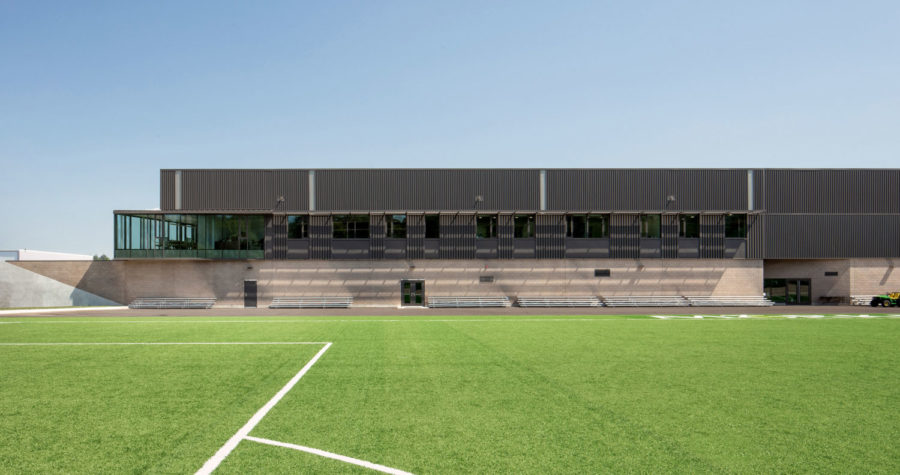
“Surrounding the playing field, angular site walls contain berms planted with Douglas fir trees that integrate the field and the fieldhouse with the surrounding, forested hills,” says Jamin Aasum, project architect at Skylab. “The east field site wall establishes a masonry datum that unifies the stadium and fieldhouse.” Photo by Stephen A. Miller
The project’s tight budget was both a challenge and an opportunity. The field house was built using a pre-engineered, Butler steel building system that provided a balance of structural and cost-efficiency, according to the architects. The simple modular structure meant the team could economically reimagine the building system to create room for “moments of delight” like the second-floor corner conference room, which dramatically projects out into the interior volume of the field house.
- Photo by Stephen A. Miller
- The first floor features a mix of sports courts and areas for equipment storage, locker rooms, restrooms, and a vending alcove. Photo by Stephen A. Miller
Where possible, materials reclaimed from the original stadium were given new life and integrated into the project, including the wood used for indoor wood benches, the reception desk, and the reception/social counter upstairs in the office space. Other creative, low-cost, high-value design features include the pops of color seen in the metal panel cladding as well as acoustic tile.
A second phase will feature a 2,500-seat stadium with an office suite, skybox, press box, locker rooms, storage, and officials’ rooms. Concessions and vendor pavilions under the roof at the grandstand concourse level will provide spaces for fans to gather and watch games.

